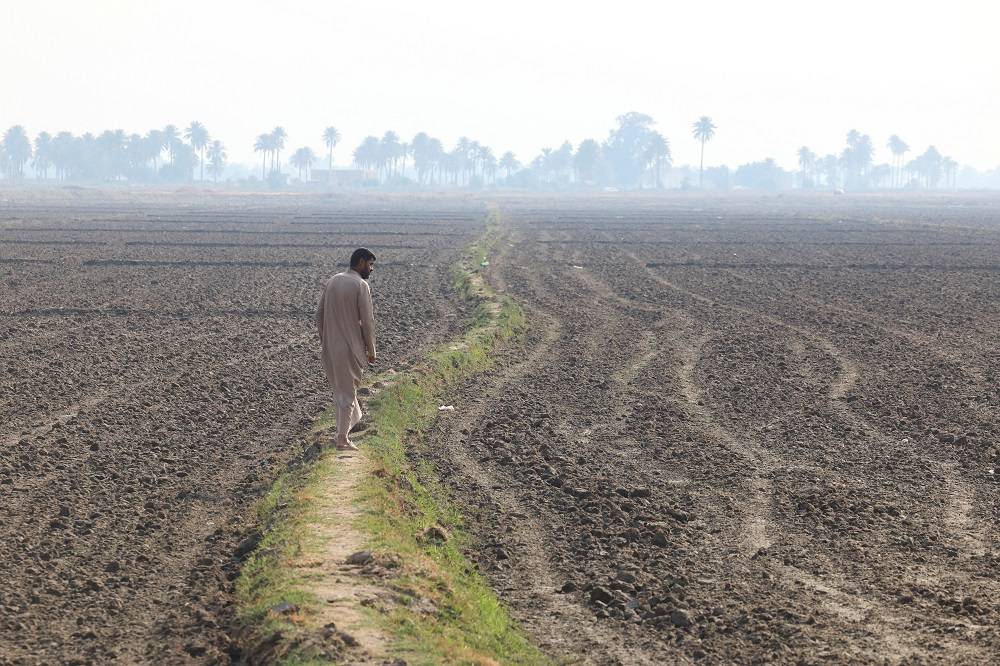Politicians and agricultural experts have warned that climate disruptions across several North African countries— including Morocco, Tunisia, and Algeria—coupled with rising temperatures each year, are directly impacting water resources.
This, they caution, could threaten food, economic, and even social security in these nations, which are structurally reliant on food imports, particularly grains. The loss of agricultural potential, declining farm production, and disruptions to the tourism sector further compound the crisis.
Morocco is enduring its seventh consecutive year of severe drought, with rainfall this year down 53% compared to the 30-year average.
The prolonged dry spell has led to a shortage of grazing pastures for livestock, reducing meat production and driving up prices in the local market. In response, the country has increased imports of live cattle, sheep, and red meat to meet demand.
Morocco has signed a deal to import up to 100,000 sheep from Australia as part of efforts to stabilize local meat prices. The government has also suspended import duties and value-added tax (VAT) on livestock, including cattle, sheep, camels, and red meat, under the 2025 budget.
The prolonged drought—described as the worst since the early 1980s—has led to a 38% decline in livestock numbers, with rainfall 53% below the 30-year average, Agriculture Minister Ahmed El Bouari said in mid-February.
As a result, reservoirs across the country have been severely depleted, causing major job losses in the agricultural sector and prompting authorities to accelerate water desalination projects.
El Bouari noted that two irrigation reservoirs in the key farming regions were only 2% and 15% full. Nationwide, dam reserves have dropped to 26%, with authorities prioritizing drinking water supplies for cities over irrigation.
Morocco’s severe drought has drastically reduced per capita water availability, with current resources estimated at less than 650 cubic meters per person per year—down from 2,500 cubic meters in 1960, according to a report by the country’s Economic, Social, and Environmental Council.
The advisory body warned that this figure could fall below 500 cubic meters by 2030, while international studies suggest climate change could wipe out 80% of Morocco’s available water resources within the next 25 years.
To combat the crisis, Morocco has built 149 large dams with a total storage capacity exceeding 19 billion cubic meters, along with medium and small dams.
The country has also expanded seawater desalination projects, operating nine plants that produce 147 million cubic meters annually, and drilled thousands of wells to tap groundwater reserves.
In neighboring Algeria, the western province of Tiaret saw mass protests last summer as residents took to the streets over prolonged water cuts caused by the local dam drying up.
The government dispatched senior officials to the region in an effort to quell public anger, pledging urgent measures to resolve what protesters called a looming “thirst crisis.”
Algeria’s Water Resources Ministry has warned that the country now ranks among nations with critical water shortages due to prolonged and recurrent droughts.
Rainfall deficits have reached between 40% and 50% in recent years compared to historical annual averages, particularly in central and western regions, the ministry said.
“The decline in rainfall caused by climate change has significantly impacted the supply of drinking water, with 20 of Algeria’s 58 provinces facing severe shortages,” the ministry stated.
It added that, like other Mediterranean countries, Algeria is experiencing a water crisis driven by climate shifts that have disrupted natural precipitation cycles.
In response to recurring droughts and dwindling rainfall, the Algerian government has fast-tracked its long-delayed seawater desalination plan to avoid the public protests that have become common as summer approaches, bringing with it a surge in demand for drinking water.
In 2023, President Abdelmadjid Tebboune pledged to ensure a stable water supply for the country’s 45 million residents for the next 15 years, promising no interruptions in service.
As part of its effort to address the worsening water shortage, Algeria’s government is advancing a plan to build five seawater desalination plants, each capable of producing 300,000 cubic meters of water daily.
Former Minister of Water Resources and Security Karim Hasni had earlier warned of the growing crisis, noting that Algeria’s climate has become increasingly arid.
He outlined a “new strategy” that calls for increased reliance on desalination plants, calling seawater desalination the “optimal solution” as surface water supplies become scarce.
Algeria’s coastline, stretching over 1,200 kilometers, provides ample resources, along with the expertise and human capital needed to support such initiatives.
Meanwhile, Tunisia is facing a dire water shortage due to its worst drought in years, with reservoirs and dams nearly empty.
In response, authorities have implemented water cuts for up to seven hours each night, a measure that has sparked concerns about escalating social tensions.
The Ministry of Agriculture has also introduced water rationing for drinking purposes and partially banned its use for agriculture, car washing, irrigation of green spaces, street cleaning, and filling private swimming pools. Authorities have warned that violators will face penalties.
A report released in March 2024 by Tunisia’s Institute of competitiveness and quantitative studies revealed that Tunisia, which has endured six years of drought over the past decade, is now the fifth most vulnerable country in the world to drought and water scarcity.
The report’s authors warned that this situation could severely hinder Tunisia’s economic and social development, urging the government to take climate change into account and strengthen adaptation measures.
According to international standards, which set the minimum water requirement at 1,000 cubic meters per person annually, Tunisia has fallen below the water poverty line with less than 500 cubic meters per person per year.










